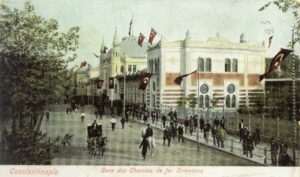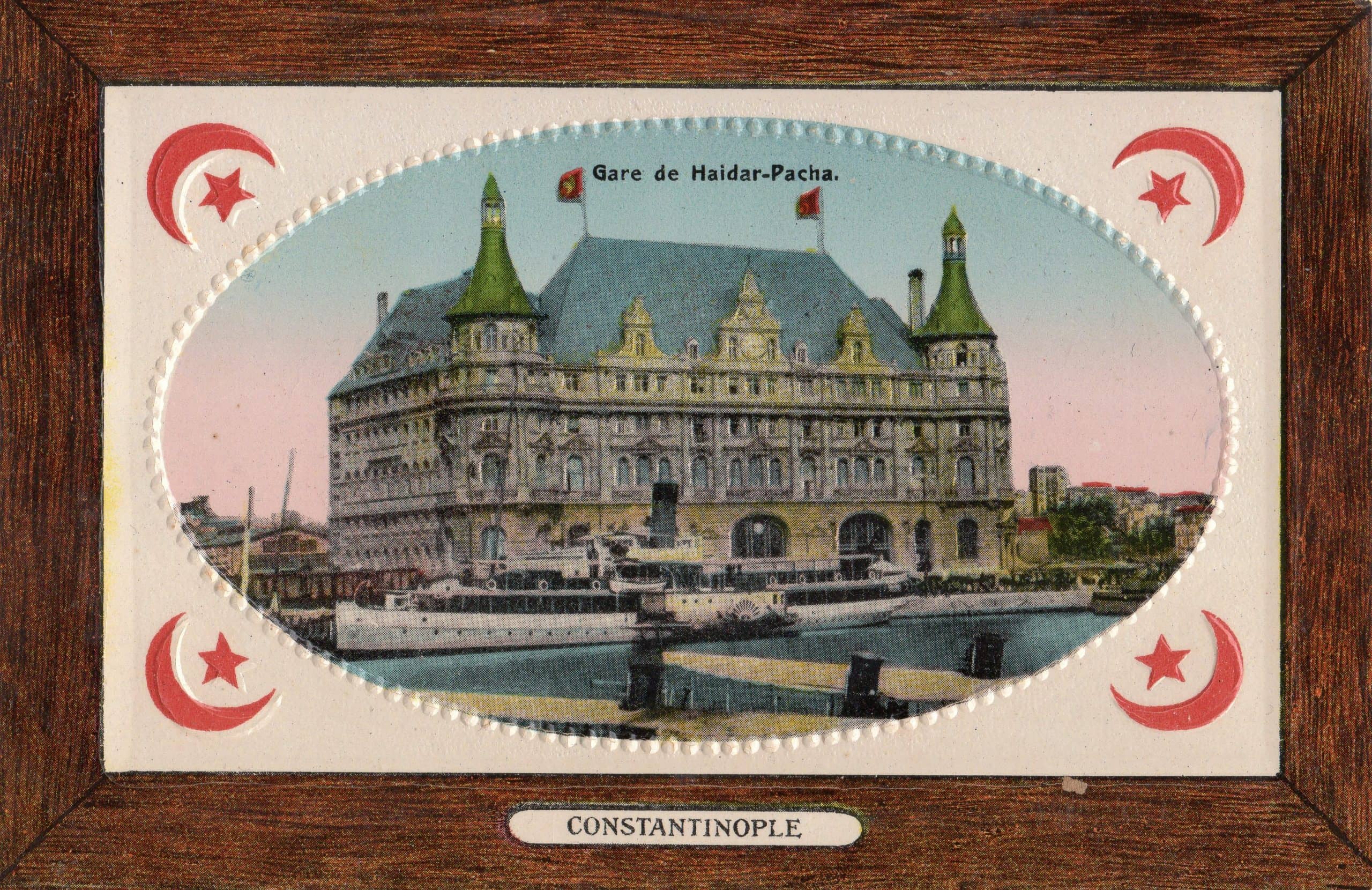The transformation of Haydarpaşa Train Station has been debated for many years and since the big fire in 2010, this topic has been on the agenda constantly. In the last couple of days, there has been a bid about Haydarpaşa and Sirkeci Stations regarding the use of their empty warehouses, where the fate of the station has been discussed. It was the main station of the railways, extending to Anatolia and the Middle East during the Ottoman period, also known as the “Gate of the East”, and its future and purpose is still an ongoing debate.
As a result of the Industrial Revolution, the railway became an indispensable part of daily life and transportation and was on the agenda of the Ottoman administration since 1850s. Many European companies, architects and engineers designed bridges before the making of the railway of Istanbul in order to connect the Asian and European continents. These projects were realized with the hope to “Get on the train from Paris, to land in Baghdad” as the saying goes.
The first railway line in Istanbul was the Yedikule-Küçükçekmece line, which officially opened on June 4th 1870. After test rides, it was decided that Yedikule wasn’t a suitable location for a main station. So, this line was extended to Sirkeci and the fairs started to be made from here. It was expected that this modest line would become a hub for Istanbul reaching Europe and the Ottoman territories in the Balkans.
While on the Asian side, the construction of a railway line from Haydarpaşa to Izmit was being planned. On August 4th 1871, the work started for this line and on September 22nd 1872, the Haydarpaşa – Pendik line was opened. For the first couple of fairs, a temporary wooden station building was built. Later, this building was replaced with a two-story masonry station designed by the Italian architect Barbaroni, opened in September 1872.
The development of the main railways in the Ottoman geography, and its spread to the interior of Anatolia began in 1888 with the granting of railway construction to Germans. It was now possible to go from Istanbul to Ankara and Konya by train, and this line was planned for extension to Baghdad. Therefore, the modest two-story station building in Haydarpaşa could no longer meet the demand, and the expansion of this station, including the construction of new halls came on the agenda. The station building in Haydarpaşa was also the head office of the Anatolian Railway Company, which was established by the Germans who built the railways. Thus, Germans wanted this railway line that is constantly expanding in volume to be a structure that is capable of meeting the needs of the main station, in turn showing the reputation of the company.
The big earthquake in Istanbul on July 10th 1894 put an end to all the discussions surrounding the enlargement of the two-story station building in Haydarpaşa since it collapsed to the ground almost to its foundation. In 1901, Sultan Abdulhamid II, commissioned the construction of the breakwater in Haydarpaşa, which exists to this day, among other constructions, for the 25th anniversary of his accession to the throne. To mark this construction, an obelisk-shaped monument was also placed in the middle of the breakwater by the Italian architect Vallaury.
Germans organized a competition for the reconstruction of the Haydarpaşa Train Station. Otto Rinner and Helmuth Cuno from the German Phillipp Holzmann & Co. company won the competition and so the construction was given to them. The construction of the new station building started on May 30th1906, the port area was filled and 1700 piles, 21 meters in length, were piled in order to consolidate its foundation.
The construction process of the station affected not only the replenished port, but also the surrounding neighborhoods. Many German and Italian architects, engineers and workers, who have worked in the construction area for many years, settled in Yeldeğirmeni, one of the closest districts to the station, and this situation has almost reshaped the neighborhood. The apartments they built for their own residence in those years and the schools they established for their own children still exist today in Yeldeğirmeni.
The construction process of the station affected not only the replenished port, but also the surrounding neighborhoods. Many German and Italian architects, engineers and workers working in the construction settled in Yeldeğirmeni as it was one of the closest districts to the station, and this situation reshaped the neighborhood. The apartments they built for their own residence and the schools they established for their own children still exist today in Yeldeğirmeni.
The construction of the railway station, started in 1906, was planned to be completed on the anniversary of Sultan Abdulhamid II’s ascent to the throne on September 1st 1908, but the abdication of Sultan Abdulhamid II, changed the whole plan. The official opening of Haydarpaşa Railway Station was realized on November 4th 1909, on the birthday of the new Sultan that is Sultan Mehmed Reşad.
Due to successive battles taking place at the time, Haydarpaşa became the location of military shipments rather than a place for daily transportation. During the First World War, Haydarpaşa Railway Station was one of the main centers where soldiers and ammunition were dispatched from. On September 6th 1917, a sabotage took place at a train carrying soldiers and ammunition to the Palestinian front. The Haydarpaşa Station got severely damaged, the roof and the domes of the station blew up.
Nazimi Yaver was proposing a change in the original structure of the building by changing its roof and dome structures in his project, which won first prize. But despite this success, the reconstruction of the station was given to Phillip Holzman & Co. since they were the ones who built the station in the first place. If Nazimi Yaver’s project had been realized, we would probably be looking at a completely different station building today and a much different Haydarpaşa would be alive in our memories.

Due to the change of train lines, Haydarpaşa Railway Station has not been used for many years. The discussions surrounding the fate of the building started with the fire that happened on November 28th 2010, which damaged the roof of the building, lasting for two and a half hours. Although the building underwent a restoration, a second fire that started in April 2018 in empty wagons in the ward reminded the dangers that could occur if the building wasn’t used. In recent days, there was a bid regarding the use of the remaining depots of Haydarpasa and Sirkeci stations for cultural and artistic activities and so the fate of the Haydarpasa station became a hotly debated topic again. How Haydarpaşa, one of the monumental structures in the history of railways as well as in Istanbul, will be used in the future and how it will be included in the city life still remains a mystery.











